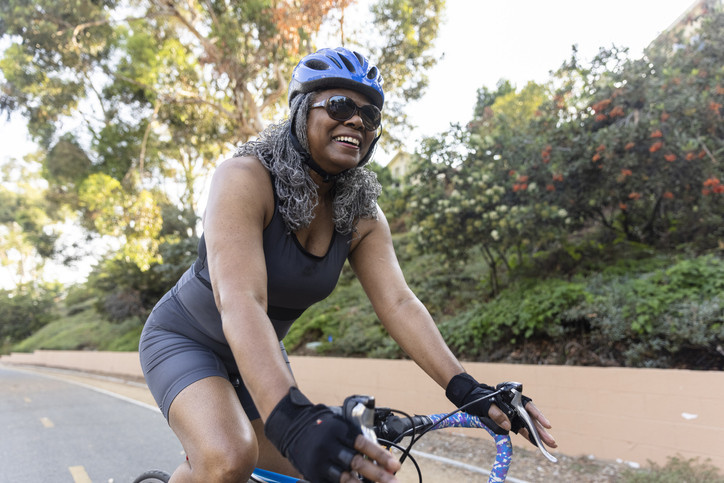
5 timeless habits for better health

What are the symptoms of prostate cancer?

Is your breakfast cereal healthy?

When pain signals an emergency: Symptoms you should never ignore

Does exercise give you energy?

Acupuncture for pain relief: How it works and what to expect

How to avoid jet lag: Tips for staying alert when you travel

Biofeedback therapy: How it works and how it can help relieve pain

Best vitamins and minerals for energy

Should you take probiotics with antibiotics?
Physical Activity Archive
Articles
Can you become a "super-ager"?
Super-agers are individuals known to maintain peak mental prowess well into their 90s and avoid dementia and Alzheimer's disease. While genetics play a big part in super-agers' cognitive health, adopting healthy lifestyle habits also contributes, and other people might be able to improve their brain health in the same way. These habits include exercising regularly, following a plant-based diet, being social, adopting mentally challenging activities, and getting adequate sleep.
Protect your eyes when playing pickleball
A 2023 report warns that pickleball and other racquet sports can expose older adults to the risk of eye injuries, but wearing protective, shatterproof eyewear when playing can offer a layer of safety.
Try this: Get low with deep squats
Practicing the deep low squat, commonly known as the "Asian squat," can improve lower back strength, flexibility, and mobility at the hips, knees, and ankles.
How low should LDL cholesterol go?
People who are at high risk for cardiovascular disease can benefit from driving down "bad" low-density lipoprotein (LDL) cholesterol levels as low as possible to help reduce their risk for heart attacks and strokes. Guidelines recommend that people at high risk aim for LDL levels below 70 milligrams per deciliter (mg/dL). The general population should strive for levels below 100 mg/dL. Taking statins and adopting healthier lifestyle habits like following a plant-based diet and increasing exercise can help manage LDL levels.
3 kettlebell moves
Kettlebells can add depth to home workouts as they are easily stored and can be used to perform virtually any type of movement for an all-around workout that hits the major muscles. Kettlebells look like balls or bells with handles on top and range in weight from five to 30 pounds and higher. While they can function similarly to dumbbells, kettlebells can provide a more challenging workout, as a person needs muscle strength, balance, core stability, flexibility, and coordination to control its weight.
Want better sleep? Aim for at least an hour of exercise per week
In a 2024 study, people who exercised at least twice a week (for a total of at least an hour), for 10 years were less likely to report difficulty falling asleep or sleeping for less than six hours a night compared with people who were inactive for 10 years.
What you need to know about electric bicycles
Riding an electric bicycle (e-bike) has risks and benefits. On the plus side, an e-bike—which has a built-in electric motor—can assist a rider when pedaling is difficult. It puts less compression on the joints than a conventional bike, and makes riding easier for people with joint pain or diminished strength or endurance. But at higher speeds, an e-bike can be difficult to control for people not used to riding, which might lead to accidents.
Interval training: A shorter, more enjoyable workout?
High-intensity interval training (HIIT) is a time-efficient way for people to improve their fitness and cardiovascular health. Even short bursts of high-intensity activity may trigger the release of mood-boosting brain chemicals. Traditionally, HIIT features 30 to 90 seconds of high-intensity effort followed by an equal or longer period of lower-intensity activity or rest. HIIT variations include fartlek (Swedish for "speed play"), which uses environmental cues to set intervals, and Tabata, which features 20-second intervals of intensity followed by 10-second recovery intervals.
Strong legs help power summer activities: Hiking, biking, swimming, and more
Legs are the foundation for many enjoyable activities—running, bicycling, swimming, and more. Building strong leg muscles can improve your performance, build endurance, and reduce your risk of injury. These exercises will work all of the major muscle groups in your legs.
What lifestyle changes can help me avoid prostate cancer?
Most older men live with some prostate cancer. However, only a small number will develop aggressive cancer that affects their quality of life. Certain habits might lower men's risk, like eating a plant-based diet, doing vigorous activity, and having frequent ejaculations.

5 timeless habits for better health

What are the symptoms of prostate cancer?

Is your breakfast cereal healthy?

When pain signals an emergency: Symptoms you should never ignore

Does exercise give you energy?

Acupuncture for pain relief: How it works and what to expect

How to avoid jet lag: Tips for staying alert when you travel

Biofeedback therapy: How it works and how it can help relieve pain

Best vitamins and minerals for energy

Should you take probiotics with antibiotics?
Free Healthbeat Signup
Get the latest in health news delivered to your inbox!
Sign Up











